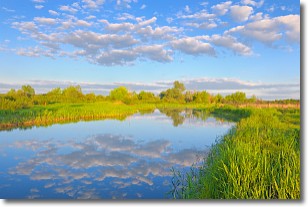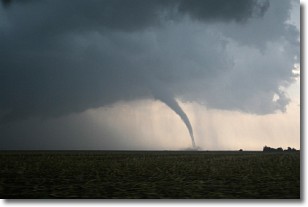Weather Alert in Texas
Flood Warning issued June 11 at 5:55PM CDT until June 13 at 10:36AM CDT by NWS Fort Worth TX
AREAS AFFECTED: Delta, TX; Hopkins, TX
DESCRIPTION: ...The Flood Warning is extended for the following rivers in Texas... South Sulphur River Near Cooper affecting Hopkins and Delta Counties. * WHAT...Minor flooding is occurring and minor flooding is forecast. * WHERE...South Sulphur River near Cooper. * WHEN...Until late Friday morning. * IMPACTS...At 20.0 feet, Moderate out of bank flooding will occur along the river reach. A few rural roads will be flooded. Moderate flooding will occur on farm and ranch land adjacent to the river. * ADDITIONAL DETAILS... - At 5:15 PM CDT Wednesday the stage was 17.8 feet. - Bankfull stage is 16.0 feet. - Flood stage is 16.0 feet. - Forecast...The river is expected to rise to a crest of 19.0 feet just after midnight tonight. It will then fall below flood stage late tomorrow evening.
INSTRUCTION: Do not drive cars through flooded areas. Caution is urged when walking near riverbanks. Additional information is available at www.water.noaa.gov/wfo/FWD.
Want more detail? Get the Complete 7 Day and Night Detailed Forecast!
Current U.S. National Radar--Current
The Current National Weather Radar is shown below with a UTC Time (subtract 5 hours from UTC to get Eastern Time).

National Weather Forecast--Current
The Current National Weather Forecast and National Weather Map are shown below.

National Weather Forecast for Tomorrow
Tomorrow National Weather Forecast and Tomorrow National Weather Map are show below.

North America Water Vapor (Moisture)
This map shows recent moisture content over North America. Bright and colored areas show high moisture (ie, clouds); brown indicates very little moisture present; black indicates no moisture.

Weather Topic: What are Stratocumulus Clouds?
Home - Education - Cloud Types - Stratocumulus Clouds
 Next Topic: Stratus Clouds
Next Topic: Stratus Clouds
Stratocumulus clouds are similar to altocumulus clouds in their
fluffy appearance, but have a slightly darker shade due to their additional mass.
A good way to distinguish the two cloud types is to hold your hand out and measure
the size of an individual cloud; if it is the size of your thumb it is generally
an altocumulus cloud, if it is the size of your hand it is generally a
stratocumulus cloud.
It is uncommon for stratocumulus clouds to produce precipitation, but if they do
it is usually a light rain or snow.
Next Topic: Stratus Clouds
Weather Topic: What are Wall Clouds?
Home - Education - Cloud Types - Wall Clouds
 Next Topic: Altocumulus Clouds
Next Topic: Altocumulus Clouds
A wall cloud forms underneath the base of a cumulonimbus cloud,
and can be a hotbed for deadly tornadoes.
Wall clouds are formed by air flowing into the cumulonimbus clouds, which can
result in the wall cloud descending from the base of the cumulonimbus cloud, or
rising fractus clouds which join to the base of the storm cloud as the wall cloud
takes shape.
Wall clouds can be very large, and in the Northern Hemisphere they generally
form at the southern edge of cumulonimbus clouds.
Next Topic: Altocumulus Clouds
Current conditions powered by WeatherAPI.com




